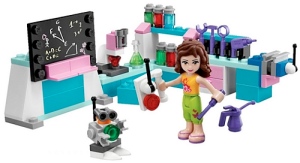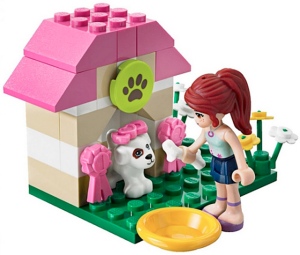 Legos remain one of the world's most popular and most beloved toys, and for more than 60 years, children of all ages have played with the plastic bricks. But starting January 1, a new line of Legos called Lego Friends will appear on store shelves, introducing what Lego's CEO calls "the most significant strategic launch we’ve done in a decade."
Legos remain one of the world's most popular and most beloved toys, and for more than 60 years, children of all ages have played with the plastic bricks. But starting January 1, a new line of Legos called Lego Friends will appear on store shelves, introducing what Lego's CEO calls "the most significant strategic launch we’ve done in a decade."
From all appearances, the new product line is aimed directly at girls, a huge shift from their current product offerings.
“They might as well have a No Girls Allowed sign,” says author Peggy Orenstein in the BusinessWeek article about the new Lego products. Orenstein wrote Cinderella Ate My Daughter, about the toy industry's leveraging young girls' fascination with princesses.
Toy store shelves clearly reflect Lego's strategy, aiming products squarely at boys. Sure, girls play with the Ninjago, Alien Conquest, or Star Wars sets, but the themes all revolve around battles, no matter what the brick-building potentials might be.
Those themed sets have been wildly successful, and since Lego started building these types of sets in the mid-2000s (often associated with movie brands like Star Wars or Pirates of the Caribbean), Lego's revenue has soared. The company topped $1 billion in sales for the first time last year, according to NPR.


